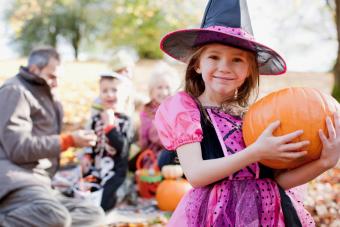
Nicaragua, nestled between Costa Rica and El Salvador in Central America, has a dramatic history of settlement, colonization, rebellion and independence. Traditional dances in the country reflect a multitude of cultural references and the indomitable spirit of its people.
Movement and the Marimba
Nicaragua's music is infused with the traditional sounds of its indigenous cultures and the strong influence of its 16th-century Spanish colonists. This is the case in many Caribbean and Central American nations, but the pervasive sounds of the marimba accompany many of the tales set to music and preserved in Nicaraguan culture. The folk dances are stories and symbols that capture Nicaragua's long dramatic history, as well as the distinctive customs and beliefs that give the nation its rich and varied flavor. Common themes are mestizaje, a jumble or mix of cultures; the duality of Spanish and indigenous heritage; religious sentiments; and the legends of heroes and history. But most folk dances are, in one form or another, celebrations of ordinary life.
Look for This
Elaborate trajes, or costumes, typically feature voluminous skirts and hair ornaments, decorated hats, or extravagant headpieces. The music is lively, and the dances lean heavily on ensemble choreography. Humor is a hallmark, especially when a performance is a time-honored part of a street festival. One of the best ways to see local performances of traditional folk dances is to plan a trip during patron saint festivals. Each town has its own saint and its own colorful interpretation of the popular dances.
Bailar Es Vivir -- To Dance Is to Live
The music is foot-tapping, and the choreography is exuberant. Nicaraguan folk dance doesn't spend a lot of time in reflective mode. Some of the dances are sly and witty, some are seductive and flirtatious, others are just parody and slapstick. Take some time to learn the dances in a region you will visit to increase your appreciation for the artistry and stay clued-in to subtle references and humor.
El Palo De Mayo
The Maypole Dance is a very sensuous Afro-Caribbean interpretation of a traditional maypole celebration, probably imported from Europe. It is popular along the Caribbean coast, especially in the Bluefields area, and may date back as far as the 17th century.
El Güegüense
El Güegüense is one of the most famous Nicaraguan folk performances: a theatrical piece combining music, dance, and satire staged each year for San Sebastian's feast day. The work dates from the colonial era, probably in the early 18th century, and it pits a wily indigenous elder (El Güegüense) against the Spanish officials trying to entrap him. The clever old man outwits them each time as dancers wearing wooden masks accompany the comic encounters.
Las Inditas
Masaya is a department south of Managua renowned for its folkloric traditions. Las Inditas is a traditional dance that honors the industrious women of the region. Performed to marimba accompaniment, it is a graceful and proud dance dedicated to female dancers in white dresses accented by red ribbons, with baskets balanced on their heads. The men are allowed only the briefest moment to show respect near the end of the dance.
Las Vaquitas - Cow Dancing
Beef production is a major Nicaraguan industry. The Spanish brought cows to the country in the 16th century and cattle have been seen as a symbol of wealth ever since. Beef is considered a celebratory feast and in the capital Managua, the annual patron saint festival, the feast of Santo Domingo, features vaquistas, or cow dancers. The main dancers are always women and always wear or carry an elaborate cow's head costume.
Art for Anytime
Nicaragua has had to work to preserve its wealth of folk dances as a national treasure. However, throughout colonization, religious conversion, political upheaval, and revolution, every town and region of the country kept its own spirited dance traditions alive. You may catch a sampling of the immense variety of traditional folkloric dances in Managua's Ruben Dario National Theater. But, with the right timing if you're lucky, you can find a homegrown and heartfelt production there for the viewing in a small zocalo or parading down the local calle principal.







